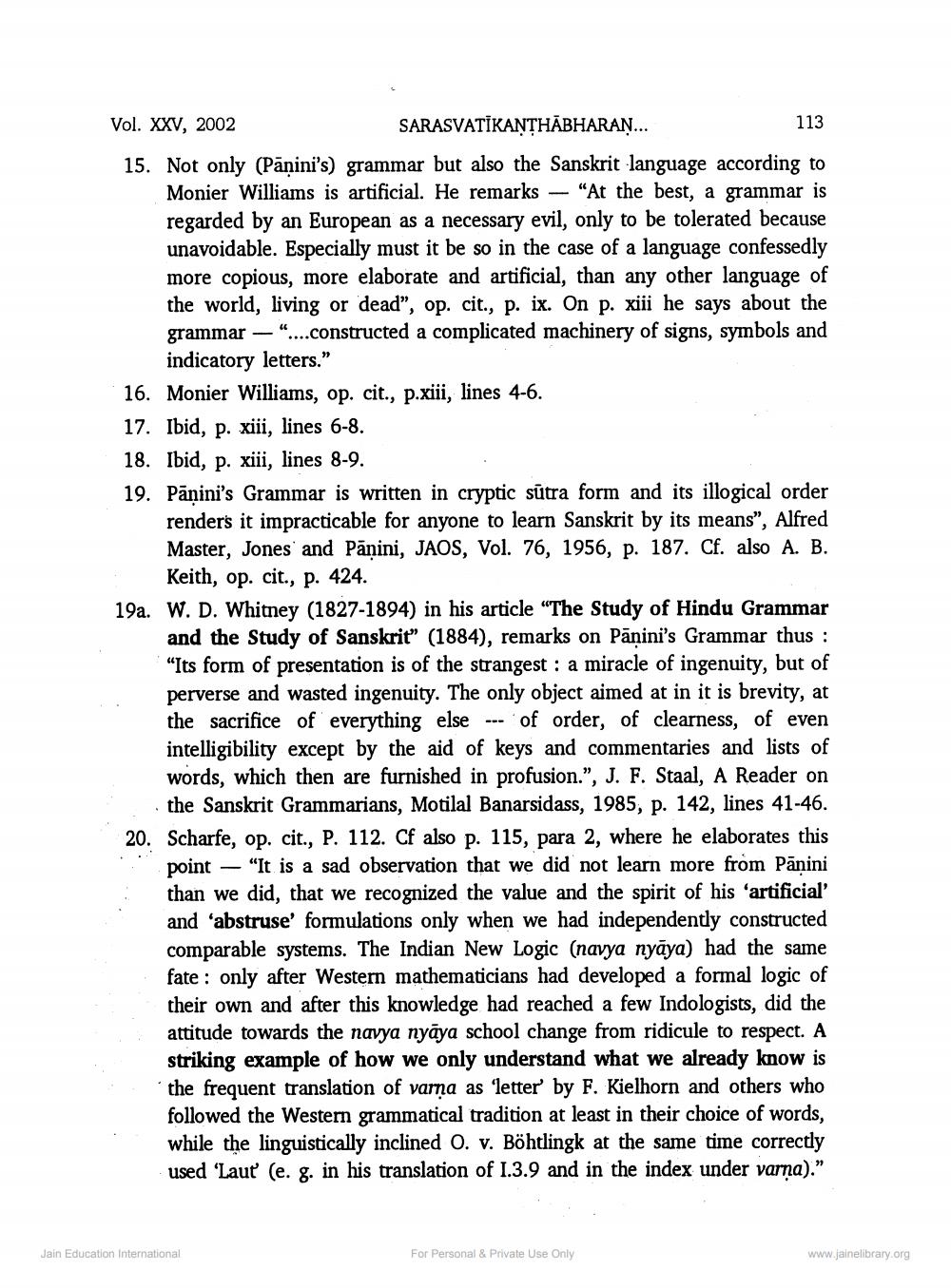________________
Vol. XXV, 2002 SARASVATIKANTHABHARAN...
113 15. Not only (Panini's) grammar but also the Sanskrit language according to
Monier Williams is artificial. He remarks - "At the best, a grammar is regarded by an European as a necessary evil, only to be tolerated because unavoidable. Especially must it be so in the case of a language confessedly more copious, more elaborate and artificial, than any other language of the world, living or dead”, op. cit., p. ix. On p. xiii he says about the grammar - "....constructed a complicated machinery of signs, symbols and
indicatory letters." 16. Monier Williams, op. cit., p.xiii, lines 4-6. 17. Ibid, p. xiii, lines 6-8. 18. Ibid, p. xiii, lines 8-9. 19. Pānini's Grammar is written in cryptic sūtra form and its illogical order
renders it impracticable for anyone to learn Sanskrit by its means", Alfred Master, Jones' and Pāṇini, JAOS, Vol. 76, 1956, p. 187. Cf. also A. B.
Keith, op. cit., p. 424. 19a. W. D. Whitney (1827-1894) in his article "The Study of Hindu Grammar
and the Study of Sanskrit” (1884), remarks on Pāṇini's Grammar thus : "Its form of presentation is of the strangest : a miracle of ingenuity, but of perverse and wasted ingenuity. The only object aimed at in it is brevity, at the sacrifice of everything else -- of order, of clearness, of even intelligibility except by the aid of keys and commentaries and lists of words, which then are furnished in profusion.", J. F. Staal, A Reader on
the Sanskrit Grammarians, Motilal Banarsidass, 1985, p. 142, lines 41-46. 20. Scharfe, op. cit., P. 112. Cf also p. 115, para 2, where he elaborates this
point — "It is a sad observation that we did not learn more from Pānini than we did, that we recognized the value and the spirit of his 'artificial and 'abstruse' formulations only when we had independently constructed comparable systems. The Indian New Logic (navya nyāya) had the same fate : only after Western mathematicians had developed a formal logic of their own and after this knowledge had reached a few Indologists, did the attitude towards the navya nyāya school change from ridicule to respect. A striking example of how we only understand what we already know is the frequent translation of varņa as 'letter' by F. Kielhorn and others who followed the Western grammatical tradition at least in their choice of words, while the linguistically inclined O. v. Böhtlingk at the same time correctly used 'Lauť (e. g. in his translation of 1.3.9 and in the index under varna).”
Jain Education International
For Personal & Private Use Only
www.jainelibrary.org




